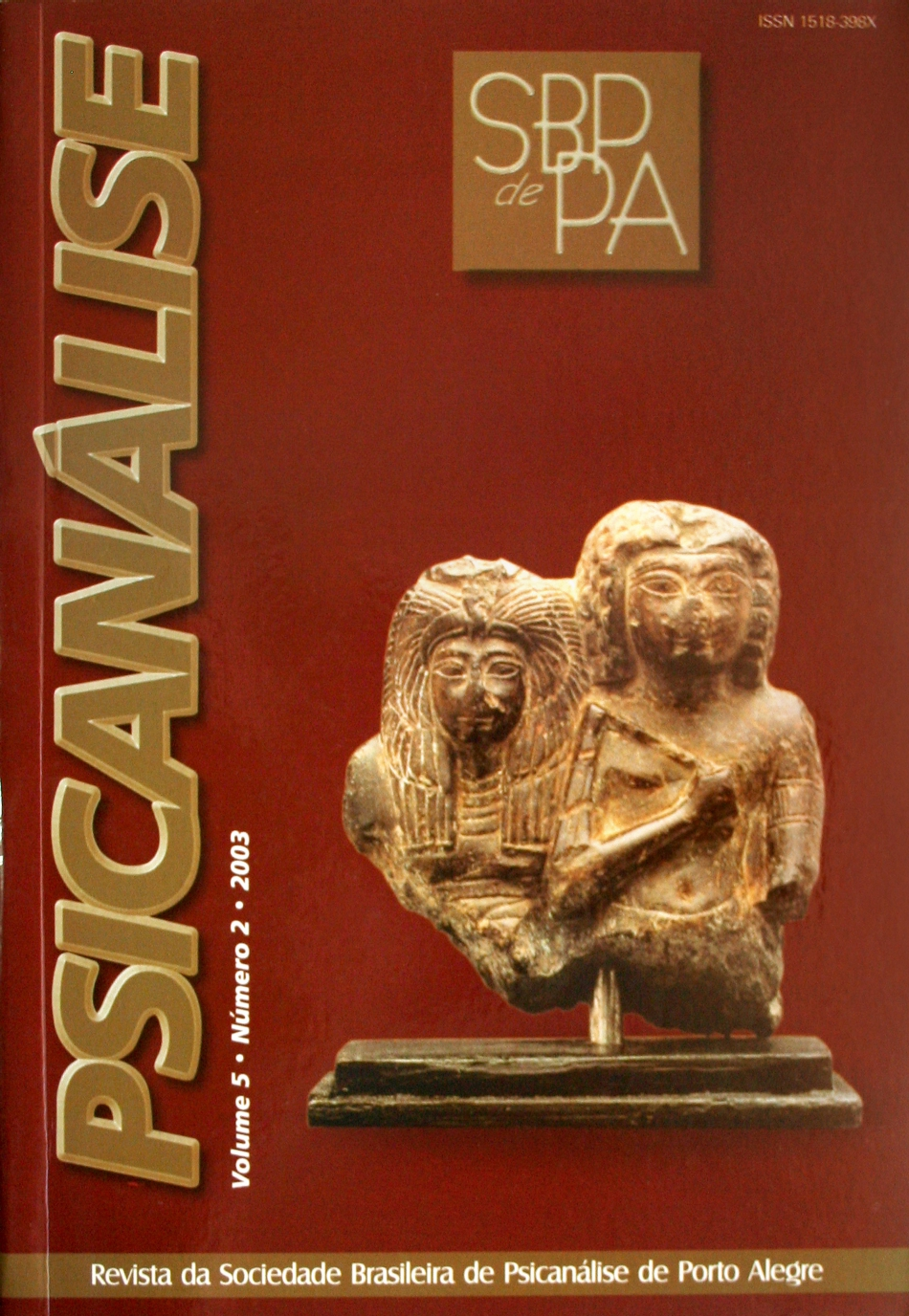The threatened subjectivity
a challenge for the psychoanalysis
DOI:
https://doi.org/10.60106/rsbppa.v5i2.133Keywords:
Subjectivity, Pseudo-adaptation, Narcissistic personalityAbstract
The description of a character that usually appears at our consultations is anexcuse to speak of new character disorders and their symptoms more and morefrequent. They are patients who are rigid to adapt themselves, being their predominant relation with the outside world at the expenses of the internal world,the difficulty to fantasize, the trend to act, the little anguish with a diffuse disorderof the symbolic thought, tell us of a personality over-adapted, with a narcissist disorder or a false self. We know that this kind of patients usually appeal to the “power of the mind”,the “techniques of self-programming”, the “mental control” or some other techniques that promise more control over their inside world, and a better control over the others and the reality. As a last resource, some of them arrive at our offices talking about an indefinite uneasiness. Very frequently they were sent by their physicians or specialists dueto somatic disorders. But, they also come to us desperate and confused as parentsof an addicted adolescent or of a boy with conduct disorders, and sometimes dueto the depressive disease of their husband/wife, to divorce or to an economic problem. They not always remain. At the moment, we are more and more concerned with these disorders, withour clinical demand. But besides this: although it seems evident that the present society makes easier the appearance of certain pathologies one could not say that it has been the psychoanalysis that recognized a “certain abnormality” in apparently healthy personalities, with variable degrees of emotional deficiencies or characterdisorders? In these cases, they are patients with personality disorders, whose uniqueness lays on the fact they are tuned with some ideals of the present civilization. I considered calling them “socio-tuned”. Of course, these characteristics are not considered symptomatic by the patients, except for some collateral difficulties. They are valued characteristics that we do not want to change: capability to make fast decisions, pride to be able to restrain the emotions, addiction to work, satisfaction to make numerous simultaneous activities, overvaluation of the autonomy and also of the ability to transgress the norms and laws. Some are classical pictures, in which the socially valued aspects have been reinforced, others are known as social pathologies, andothers require more original descriptions. People dissociated from their psychic reality and their emotions that sometimes reappear with uncontrollable violence. New pathologies related to the values of our civilization? It would be dangerous to affirm it. But the coincidences are many.Downloads
References
ABADI, S.; ANTAR, D.; BUSTAMANTE, A.; CARPOSSI, J.; ESCAPA, L.; GREFFIER, C.; LONGARELLA, H.; O’DONNELL, P.; SZLACK, M.; REVERE, N. Una vida no basta, normalidad y patología de la transicionalidad.
______. Transiciones: el modelo terapéutico de Winnicott. Buenos Aires: Lumen, 1996.
______. et al. Desarrollos posfreudianos: escuelas y autores. Buenos Aires: Ed. Universidad de Belgrano, 1997.
BION, W. Aprendiendo de la experiencia. México: Paidós, 1991.
DAVIS, M.; WALLBRIDGE, D. Límite y espacio: introducción a la obra de Winnicott. Buenos Aires: Amorrortu, 1988.
FREUD, S. (1914). Introducción del narcisismo. A.E., v. 14.
______. (1938). Escisión del yo. A.E., v. 23.
GREEN, A. La metapsicología revisitada. Buenos Aires: Eudeba, 1996.
KAES, R.; ANZIEU, D. et al. (1979). Crisis, ruptura y superación. Buenos Aires: Ediciones Cinco.
KOHUT, H. La restauración del sí mismo. Buenos Aires: Paidós, 1980.
McDOUGALL, J. (1974) Le psiché-soma et le psychanalyste. Nouvelle Revue de Psychanalyse, n.10, Automne. “Aux limites de l’analysable. Editions Gallimard, France.
_____. (1982). Théatres du Je. Paris: Gallimard.
WINNICOTT, D. El proceso de maduración en el niño. Barcelona: Laia, 1975. Donald Winnicott. Buenos Aires: Trieb, 1978.
WINNICOTT, D. (1989). Exploraciones psicoanaliticas I y II. Buenos Aires: Paidós, 1991.
_____. (1992). Realidad y juego. Barcelona: Gedisa, 1992.
_____. (1979). Escritos de pediatría y psicoanálisis. Barcelona: Laia.
Downloads
Published
How to Cite
Issue
Section
License
I attribute the copyrights that belong to me, on this work, to SBPdePA, which may use and publish it by the means it deems appropriate, including on the Internet or in any other computer processing.
















